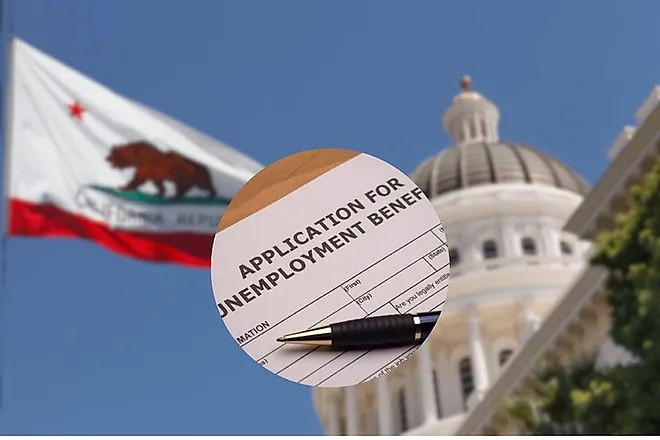- Georgia and Wyoming still list $5.15/hour as their official minimum, but the federal rate of $7.25/hour applies to most workers.
- 17 states, including Texas, Pennsylvania, and Indiana, remain at the federal minimum of $7.25/hour, unchanged since 2009.
- High-wage states like Washington ($16.66) and California ($16.50) offer workers more than double the federal rate.
- The disparity reflects both economic conditions and political choices, creating stark differences in worker well-being across the U.S.
The U.S. minimum wage debate hasn’t cooled down since the federal rate was last raised in 2009. While some states now pay more than $16 an hour, others continue to hold at the legal floor. In this guide, we’ll break down the states with the lowest minimum wage, how they compare to states with the highest rates, and what it means for workers across the country.

Federal Minimum Wage vs. State Minimum Wage
To understand why wage differences exist, you need to know how federal and state laws interact:
- Federal minimum wage: $7.25 per hour (unchanged since July 2009).
- States can set higher rates than the federal minimum.
- If a state sets a rate below $7.25, the federal minimum wage overrides it for most workers under the Fair Labor Standards Act (FLSA).
This system has created a two-tier reality: workers in some states are earning wages tied to 2009 costs, while others benefit from state-driven increases tied to inflation or local policies.
States With the Lowest Minimum Wage (2025)
States Below the Federal Rate
Two states technically still have the lowest minimum wage rates on paper:
- Georgia: $5.15/hour
- Wyoming: $5.15/hour
However, because of FLSA protections, most workers in these states still receive at least $7.25/hour. The $5.15 rate only applies to certain employers not covered by federal law.
States Stuck at the Federal Minimum ($7.25/hour)
Seventeen states have chosen not to increase their minimum wage above the federal level:
- Texas
- Mississippi
- South Carolina
- Idaho
- Indiana
- Iowa
- Kansas
- Kentucky
- Louisiana
- North Carolina
- North Dakota
- Oklahoma
- Pennsylvania
- Tennessee
- Utah
- Wisconsin
States With the Lowest Minimum Wage in 2025
| State | Minimum Wage | Notes |
|---|---|---|
| Georgia | $5.15/hour | Federal minimum ($7.25) applies in most cases |
| Wyoming | $5.15/hour | Federal minimum applies |
| Texas | $7.25/hour | Matches federal minimum, unchanged since 2009 |
| Mississippi | $7.25/hour | Federal minimum applies |
| South Carolina | $7.25/hour | Federal minimum applies |
| Idaho | $7.25/hour | Federal minimum applies |
| Indiana | $7.25/hour | Federal minimum applies |
| Iowa | $7.25/hour | Federal minimum applies |
| Kansas | $7.25/hour | Federal minimum applies |
| Kentucky | $7.25/hour | Federal minimum applies |
| Louisiana | $7.25/hour | Federal minimum applies |
| North Carolina | $7.25/hour | Federal minimum applies |
| North Dakota | $7.25/hour | Federal minimum applies |
| Oklahoma | $7.25/hour | Federal minimum applies |
| Pennsylvania | $7.25/hour | Federal minimum applies |
| Tennessee | $7.25/hour | Federal minimum applies |
| Utah | $7.25/hour | Federal minimum applies |
| Wisconsin | $7.25/hour | Federal minimum applies |
Why Having the Lowest Minimum Wage Matters
For workers in these states, staying at $7.25 an hour creates several challenges:
- Erosion of purchasing power: Prices have risen dramatically since 2009, but wages have not.
- Cost of living pressures: Even in lower-cost states, $7.25/hour often falls short of covering housing, food, and healthcare.
- Wage stagnation: Without periodic adjustments, workers in these states are left further behind compared to those in states with indexed or regularly updated wages.
For example, someone working 40 hours per week at $7.25/hour earns $15,080 per year before taxes. In most states, this amount sits below the poverty line for a family of two.
States With the Highest Minimum Wages in 2025
While some states remain at the bottom, others have pushed forward aggressively:
- Washington: $16.66/hour (highest in the nation)
- California: $16.50/hour
- Connecticut: $16.35/hour
- Massachusetts, Maryland, Illinois, New York, New Jersey: all set minimum wages at or above $15/hour.
These states often tie wages to inflation, ensuring workers don’t lose purchasing power each year.
Lowest vs. Highest State Minimum Wages
| Category | States | Wage (2025) |
|---|---|---|
| Lowest | Georgia, Wyoming | $5.15/hour (federal minimum $7.25 still applies) |
| Federal Level | 17 states including Texas, Pennsylvania, and Tennessee | $7.25/hour |
| Highest | Washington | $16.66/hour |
| High-tier | California | $16.50/hour |
| High-tier | Connecticut | $16.35/hour |
| $15+ States | MA, MD, IL, NY, NJ | $15.00–$16.00+ |
Impact of Wage Differences Across States
The wage divide highlights economic and political choices:
- High-wage states prioritize worker purchasing power and often see lower turnover rates.
- Low-wage states argue that keeping wages low helps businesses remain competitive, especially small employers.
- Workers in low-wage states often rely on federal assistance programs to cover basic needs.
Special Cases: Tipped and Youth Minimum Wages
- Tipped workers: Federal tipped minimum wage is $2.13/hour. Employers must ensure tips bring workers up to at least $7.25.
- Youth wage: Workers under 20 can be paid $4.25/hour during the first 90 days of employment.
- Some states set higher protections for tipped workers, while others mirror federal law.
Future Outlook for States With the Lowest Minimum Wage
- Push for federal changes: There have been repeated attempts to raise the federal minimum wage, but none have passed.
- State-level pressure: Advocacy groups are targeting states like Pennsylvania and Texas to move off the federal floor.
- Inflation indexing: More states are adopting policies to automatically adjust wages based on cost of living.
If the federal minimum wage remains frozen, the gap between the lowest minimum wage states and the highest minimum wage states will continue to grow.







